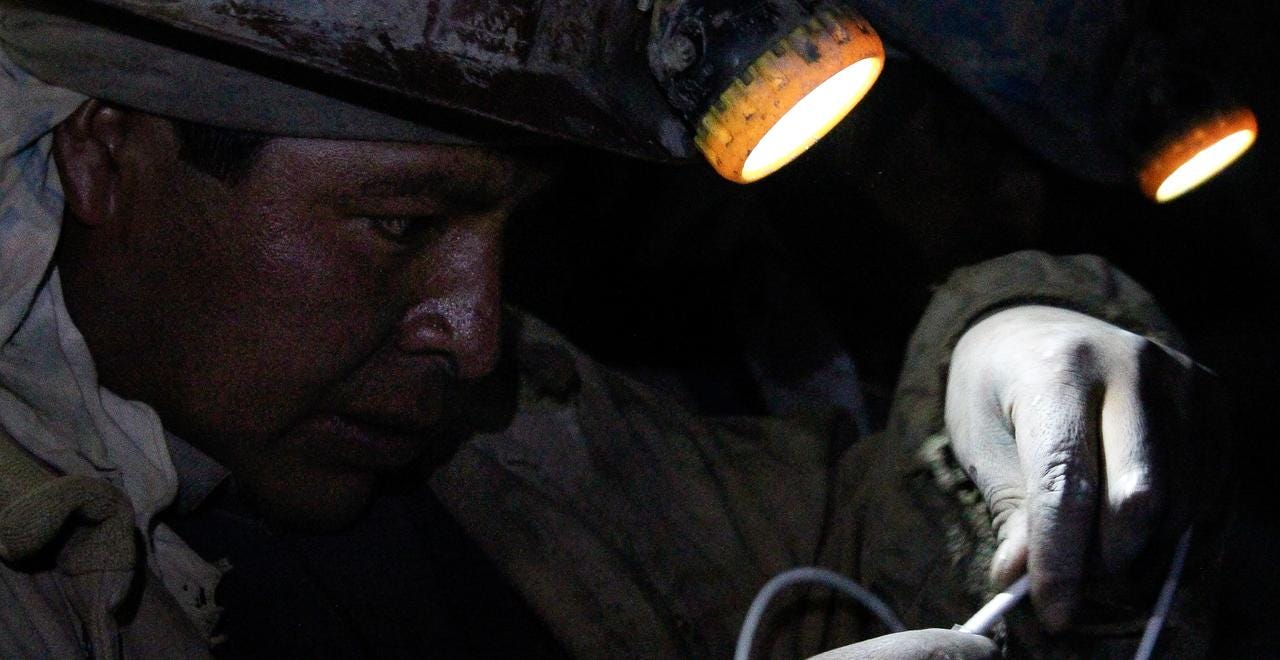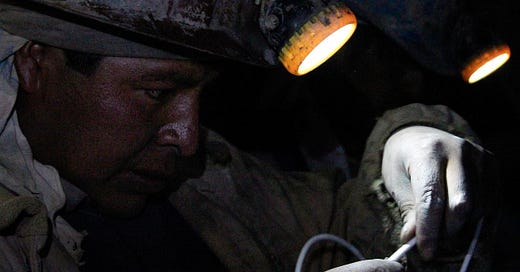The Mountain that Eats Men
For nearly 500 years, El Cerro Rico has given Bolivia silver and claimed millions of men. Now, a few fearless tourists are journeying deep inside.

Photos by Micah Trautmann
A raw drizzle sets in outside the entrance to the mines. A group of tourists in orange fatigues, gumboots and hardhats drifts around the rusting hulks of upturned mine carts and sheets of corrugated metal. Two boys with drawn faces and torn rain ponchos wander about, trying to sell precious minerals out of a cardboard box. One stops to help a French woman adjust her lamp. Across the tracks, a boorish Aussie poses for a photo with a stick of dynamite like a fat white cigar in the corner of his mouth. His friend holds a fuse to the tip.
Keep reading with a 7-day free trial
Subscribe to Narratively to keep reading this post and get 7 days of free access to the full post archives.



